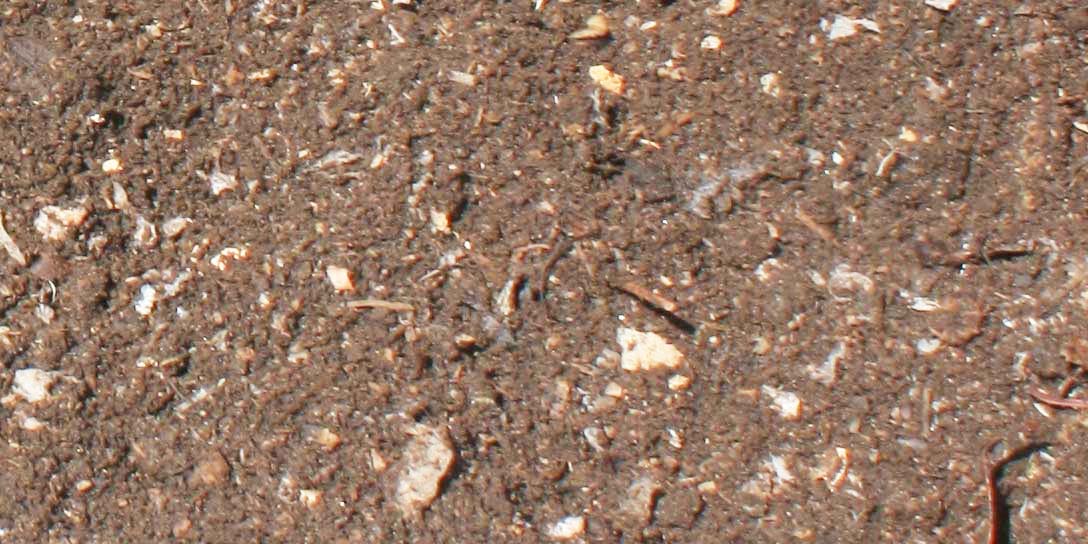Analysis of Compost

Background
Compost can be defined as decomposed organic matter. It can be produced from a wide variety of organic feedstocks. Many composts are produced from municipal green (garden) wastes. The composting process can involve reducing the particle size of the biomass and then placing it in mounds where the composting is allowed to take place over an extended period of time. Fully composted material can, in some cases, be suitable for addition to soil.As part of a research project funded by the Irish Environmental Protection Agency, Celignis founder Daniel Hayes has collected, processed, and analysed (using both chemical and near-infrared techniques) a number of different compost samples.
Analysis of Compost at Celignis
Celignis Analytical can determine the following properties of Compost samples:
Sugars (Monosaccharides)
Sugar Alcohols and Uronic Acids
Lignin and Extractives
- Lignin (Klason)
- Lignin (Klason - Protein Corrected)
- Lignin (Acid Soluble)
- Acid Insoluble Residue
- Extractives (Ethanol-Soluble)
- Extractives (Water-Soluble)
- Extractives (Exhaustive - Water then Ethanol)
- Lignin S/G Ratio
- Extractives (Water-Insoluble, Ethanol Soluble)
- Protein Content of Acid Insoluble Residue
- Carbon Content of Acid Insoluble Residue
- Hydrogen Content of Acid Insoluble Residue
- Nitrogen Content of Acid Insoluble Residue
- Sulphur Content of Acid Insoluble Residue
Amino
Acids
Thermal Properties
- Moisture
- Ash
- Ash (Acid Insoluble)
- Carbon
- Hydrogen
- Nitrogen
- Sulphur
- Oxygen
- Volatile Matter
- Fixed Carbon
- Gross Calorific Value
- Net Calorific Value
- Chlorine
- Ash Shrinkage Starting Temperature (Oxidising)
- Ash Deformation Temperature (Oxidising)
- Ash Hemisphere Temperature (Oxidising)
- Ash Flow Temperature (Oxidising)
- Ash Shrinkage Starting Temperature (Reducing)
- Ash Deformation Temperature (Reducing)
- Ash Hemisphere Temperature (Reducing)
- Ash Flow Temperature (Reducing)
- Thernogram - Under Nitrogen
- Thermogram - Under Air
Major and Minor Elements
Cellulose Content of Compost
The composition of compost will depend on the organic material that has been used to produce it and the time and extent of the composting process. Taking the example of compost produced from horticultural waste, there will be a significant variation in composition according to the time of year. For example, in the summer the majority of garden wastes are likely to be of grasses (lawn cuttings) or the cuttings of bushes (small twigs and leaves) rather than bulky woody materials. In contrast, in the winter months the relative proportion of woody materials might be expected to increase.In his EPA-funded research project, Celignis founder Daniel Hayes found that an increased period of comosting was associated with a lower cellulose content.
Click here to see the Celignis Analysis Packages that determine cellulose content.
Hemicellulose Content of Compost
The hemicellulose content of compost will depend on the organic material that has been used to produce it and the time and extent of the composting process.Click here to see the Celignis Analysis Packages that determine hemicellulose content.
Lignin Content of Compost
In his EPA-funded research project, Celignis founder Daniel Hayes found that an increased period of composting was associated with an increased lignin content.Click here to see the Celignis Analysis Packages that determine lignin content.
Starch Content of Compost
The starch content of compost will depend on the composting time, with the value decreasing as the composting time increases.Click here to see the Celignis Analysis Packages that determine starch content.
Uronic Acid Content of Compost
Uronic acids are present in many of the feedstocks that are used to generate compost, however we are not aware of any studies to date on the fate of these uronic acids during the composting process.Click here to read more about uronic acids and to see the Celignis Analysis Packages that determine uronic acid content.
Enzymatic Hydrolysis of Compost
We can undertake tests involving the enzymatic hydrolysis of Compost. In these experiments we can either use a commercial enzyme mix or you can supply your own enzymes.We also offer analysis packages that compare the enzymatic hydrolysis of a pre-treated sample with that of the native original material.
Click here to read more about enzymatic hydrolysis and to see the various analysis packages that we offer.
Ash Content of Compost
The ash content of compost is likely to increase with increased degradation of the organic matter.Click here to see the Celignis Analysis Packages that determine ash content.
Heating (Calorific) Value of Compost
The heating value of compost will depend on the organic material that has been used to produce it and the time and extent of the composting process. Composts can have lesser heating values due to their high ash and moisture contents.Click here to see the Celignis Analysis Packages that determine heating value.
Bulk Density of Compost
At Celignis we can determine the bulk density of biomass samples, including Compost, according to ISO standard 17828 (2015). This method requires the biomass to be in an appropriate form (chips or powder) for density determination.Click here to see the Celignis Analysis Packages that determine bulk density.
Basic Density of Compost
At Celignis we can determine the basic density of some suitable biomass samples. The method requires the biomass to be in an appropriate form (chips) for density determination.Click here to see the Celignis Analysis Packages that determine basic density.
| Previous Feedstock | Next Feedstock |
Go Back to List of Feedstocks.
Energy
Crops
Agricultural Residues and Wastes
Industrial Residues and Wastes
Municipal
Wastes
Biorefinery
Products






